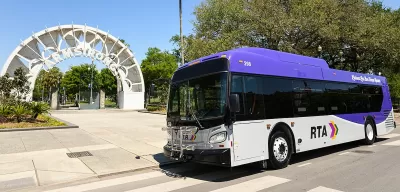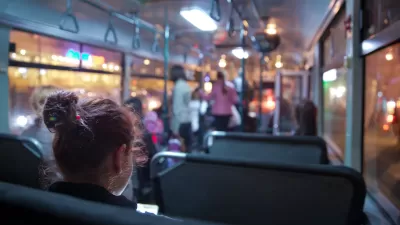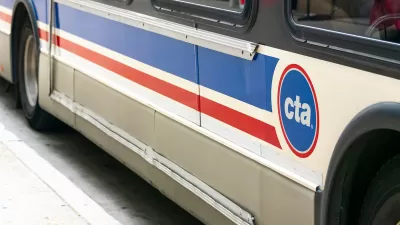Regional transit agencies, already forced to make cuts, are calling for state funding to help them maintain service and access federal grant opportunities.

New Orleans transit riders are suffering from severely reduced service since Hurricane Katrina devastated the city in 2005, according to an analysis from RIDE New Orleans, the Regional Transit Authority (RTA), and Jefferson Parish Transit. “At the moment, the average Orleans Parish resident can access only 35% of jobs in the region within 60 minutes on public transit,” notes Blake Paterson in the Times-Picayune.
Although many New Orleans buses used to run every 10 minutes, the region’s agencies now offer just 60 percent of the service they did in 2004. “Both the RTA and Jefferson Parish Transit are expected to face shortfalls in revenue in the coming years that will make maintaining existing levels of service difficult. And Jefferson Parish is in the process of exiting the RTA, leaving Orleans Parish as the sole participant in what was supposed to be a multi-parish public transit agency.”
RIDE estimates that the agencies need roughly $55 million per year for operating revenues to return to pre-Katrina service levels. Transit officials are calling for more support from the state to supplement local funding, which could help meet federal matching requirements and unlock grant dollars. As of 2022, Louisiana ranked 43rd in the nation for per-capita transit spending.
FULL STORY: Is New Orleans public transit at a crossroads? Advocates call for massive investment

Study: Maui’s Plan to Convert Vacation Rentals to Long-Term Housing Could Cause Nearly $1 Billion Economic Loss
The plan would reduce visitor accommodation by 25,% resulting in 1,900 jobs lost.

North Texas Transit Leaders Tout Benefits of TOD for Growing Region
At a summit focused on transit-oriented development, policymakers discussed how North Texas’ expanded light rail system can serve as a tool for economic growth.

Why Should We Subsidize Public Transportation?
Many public transit agencies face financial stress due to rising costs, declining fare revenue, and declining subsidies. Transit advocates must provide a strong business case for increasing public transit funding.

How to Make US Trains Faster
Changes to boarding platforms and a switch to electric trains could improve U.S. passenger rail service without the added cost of high-speed rail.

Columbia’s Revitalized ‘Loop’ Is a Hub for Local Entrepreneurs
A focus on small businesses is helping a commercial corridor in Columbia, Missouri thrive.

Invasive Insect Threatens Minnesota’s Ash Forests
The Emerald Ash Borer is a rapidly spreading invasive pest threatening Minnesota’s ash trees, and homeowners are encouraged to plant diverse replacement species, avoid moving ash firewood, and monitor for signs of infestation.
Urban Design for Planners 1: Software Tools
This six-course series explores essential urban design concepts using open source software and equips planners with the tools they need to participate fully in the urban design process.
Planning for Universal Design
Learn the tools for implementing Universal Design in planning regulations.
Ascent Environmental
Borough of Carlisle
Institute for Housing and Urban Development Studies (IHS)
City of Grandview
Harvard GSD Executive Education
Toledo-Lucas County Plan Commissions
Salt Lake City
NYU Wagner Graduate School of Public Service





























